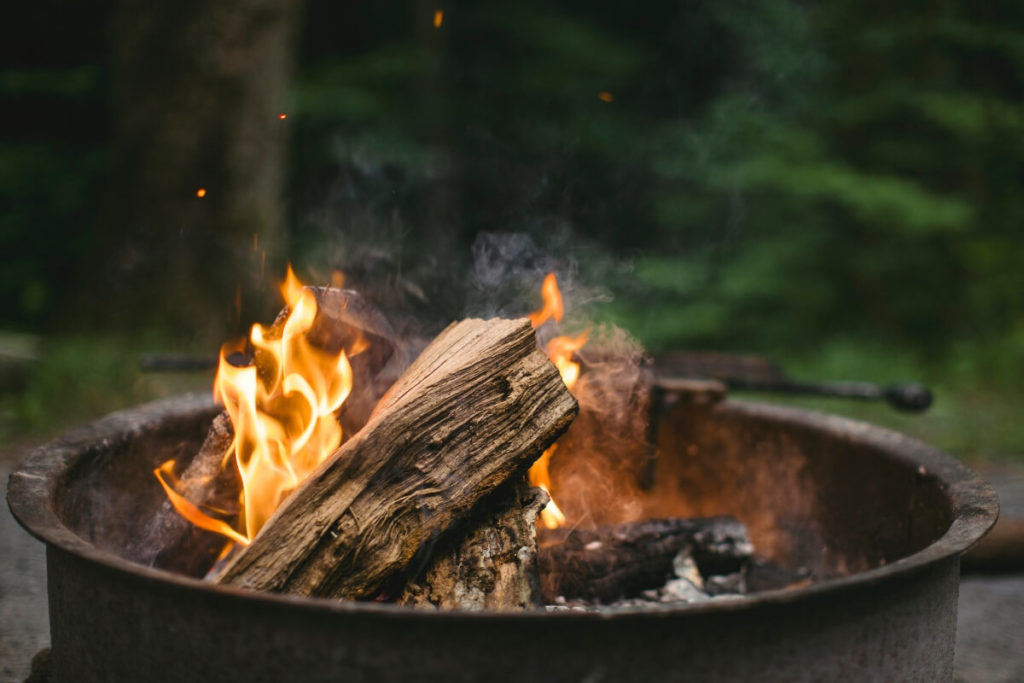
The 5 W’s of Wilderness Survival
When spending a night in the outdoors there are several items to think about. What to eat, how to dress, what gear to pack, and how many beers to bring. One item that is often overlooked is how to select the proper site to set up camp. Choosing a suitable campsite can be the difference between a good night’s rest and a wretched, even dangerous experience. Likewise, from a survival scenario point of view, selecting a decent location is going to provide safety and a series of resources that are going to keep you alive and comfortable during the situation. Either scenario, when making a decision to set up camp, choosing the right location is critical. There are five important factors of wilderness survival to take into account to stay safe and stay comfortable. The five factors include: wind, water, widowmakers, wood, and wildlife. These factors are referred to as the “5 W’s.”
1. Wind
Wind in every environment can dramatically affect a camper’s body core temperature. Before constructing a shelter, it is imperative to identify what direction the wind is blowing. A primary function of a shelter is to block the wind, which protects individuals from the harsh elements. Identifying natural elements, such as rock outcrops and heavy vegetation will help block the wind as well. Utilizing Mother Nature to your advantage when in the outdoors is beneficial. If the wind seems to be changing directions, changing the location may be the best option.
2. Water

It is important to think about water in two different ways. First, thinking about the location and positioning of water will determine where a shelter should be set up. You do not want to be in a position where water will collect near the shelter or run through the area. The purpose of a shelter is void when you have to move camp and reposition a shelter during a storm. To do this, check for high and low areas in the ground. Walking through camp will allow the individual to explore for these spots in the ground, and also examine the ground for erosion. Leaves and dirt that look like they have been pushed unnaturally in a specific direction is a good sign of water runoff. Second, ensure that there is a water source nearby for drinking. Moving camp 200-300 yards in a single direction will yield a more accessible approach to a water source and provide water for not only drinking but for cleaning and washing dishes.
3. Widowmakers
 Dead trees that are lurking above camp can be fatal. Falling branches can impale individuals unknowing while sleeping or completing camp chores. It is essential to look high and low for dangers. Frequently, trees will have visual signs of rot or decay at the base of the trunk when the top of the tree looks normal; this may cause the tree to come crashing down. Widowmakers is one of the most dangerous “W’s” out of the five. So, staying clear of situations like this is of utmost importance. Often times the height of a tree is underestimated and the direction of the fall is unknown. Because the branches look small when they are 40 feet in the air does not mean they are.
Dead trees that are lurking above camp can be fatal. Falling branches can impale individuals unknowing while sleeping or completing camp chores. It is essential to look high and low for dangers. Frequently, trees will have visual signs of rot or decay at the base of the trunk when the top of the tree looks normal; this may cause the tree to come crashing down. Widowmakers is one of the most dangerous “W’s” out of the five. So, staying clear of situations like this is of utmost importance. Often times the height of a tree is underestimated and the direction of the fall is unknown. Because the branches look small when they are 40 feet in the air does not mean they are.
4. Wood
In an emergency situation having a campfire can be the difference between life and death. Fueling the fire is essential, so choosing an area that has ample amounts of wood suitable for starting and sustaining a fire is important. When looking for wood to start a fire you must first find wood that is small in size, typically the size of a toothpick to the size of a number 2 pencil. Small wood like this is going to dry and burn more quickly giving the fire the heat it needs to grow.
Once sustaining the fire, the next step is to locate larger pieces of wood like the size of one’s wrist. Staying up all night to put sticks on the fire is never pleasant so be sure that there are downed dead trees nearby in order to provide fuel for your stay as there is a possibility that an axe or saw may not be available. Learn to use what the landscape provides. It will minimize work and save calories.
5. Wildlife
Animals can cause difficulties for individuals when camping. Depending on the geographical location, dangerous animals may be in the area. It is important to be educated about the animals within the area of travel. Take a thorough look for animal signs before setting up your shelter – tracks, scat, and game trails are all signs that animal activity is in the area. Furthermore, the need to properly secure food is of high importance.
So, before setting up camp, review the 5 W’s to choose the right location. Having this established routine will make camp life that much safer and camp chores that much more efficient.




